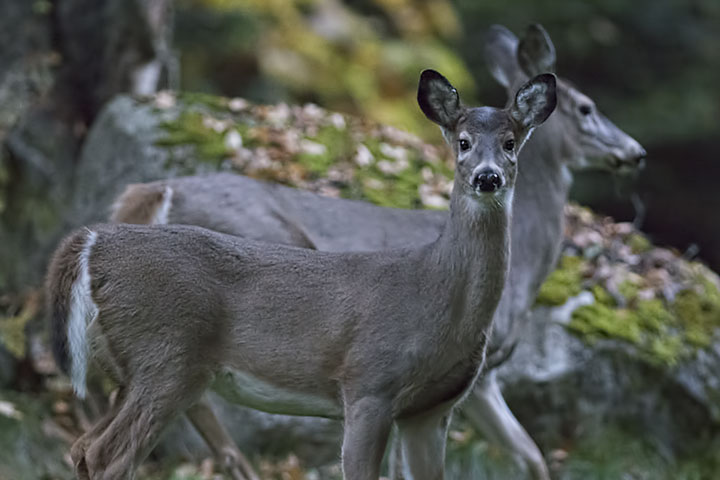Two White-tailed Deer, a doe and fawn, were browsing behind my home in the pre-dawn light. As I watched, I pondered: Why the white tail? What evolutionary advantage did it give these deer to be able to hide and show such a striking signal?
I have encountered two conjectures:
• The first relies on the realization that an individual has a better chance of survival when it stays with the group. When fleeing a predator, deer raise their tails to provide an easy way for laggards to spot and stay with those ahead. The downside of this idea is that it also provides the predator with an easy target to follow.
• The second conjecture focuses on the predator, rather than on group cohesion. Deer raise their tails to give a predator something to aim at. Abruptly, the deer drops its tail and veers off course. The predator continues in the same direction, now chasing a seemingly vanished deer. I have heard that some small birds avoid death from falcons with such a bait-and-switch tactic: once a falcon is diving at them, they present a highly visible target; one that is then hidden during a last-second course change. (Good timing seems crucial.)
Of course, both ploys might help the deer to survival. I just don’t know—and the deer aren’t talking.
A doe and a fawn behind my home. When the tail is down, these deer are not very conspicuous.

With its tail raised, a deer provides an easy target for both other deer and a predator.


I must agree with the second opinion. It has been my experience that when White-tailed Deer feel threatened they will “Flag” (raise their tail) and run away. After a short distance they will drop the flag and instantly turn either left or right. Your eye, or that of the predator, still fixated on the now missing flag will miss the turn, allowing the White-tailed Deer to vanish into the environment.